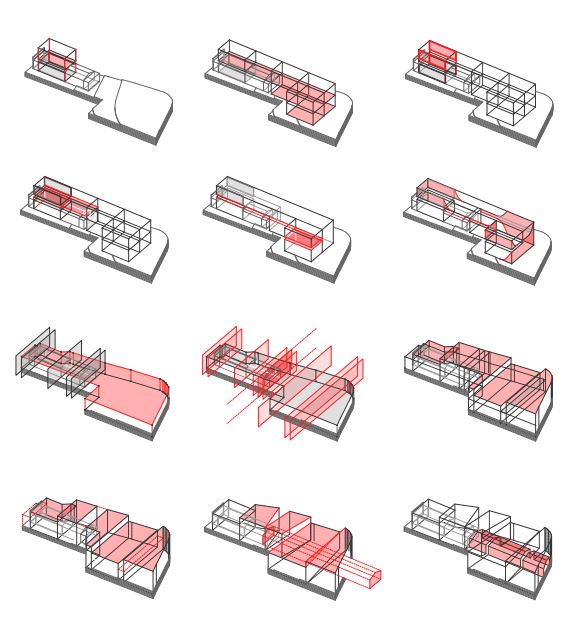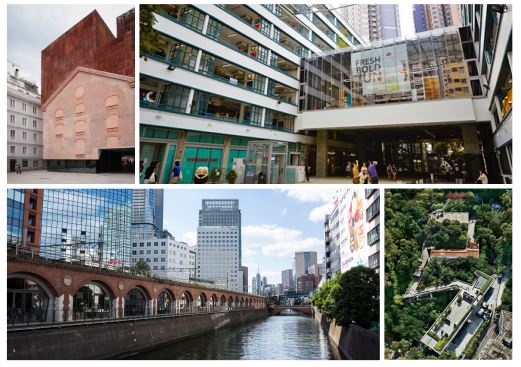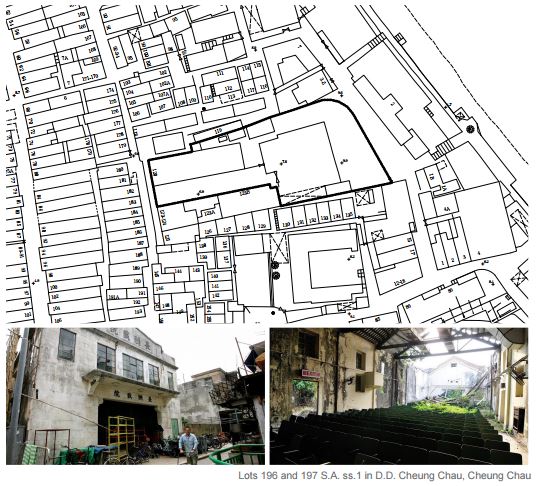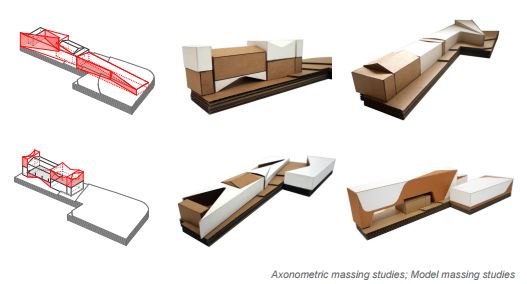COARSE ENTIRETY
|
With the ever increasing demand for alteration works in Hong Kong, this thesis aims to explore the potentials of creating a semi-autonomous new ‘whole’ which is neither continuous nor fragmented on top of existing structures. Rather than complete redevelopments, parasitic interventions or merely restorations, the thesis intends to examine and amplify the agonistic qualities of the site. Through the juxtaposition of existing gaps, new voids and interstitial spaces that are neither old nor new, heterogeneity is rendered within wholism. WHY?
Early since Renaissance there has been vigorous discussions on the idea of wholism in the realm of architecture – where buildings, paintings, sculpture and various disciplines come together as one. This can be seen in the works of architects such as Vitruvius, Alberti and Michelangelo. The discussion went on in the 20th century – Rowe and Koetter called for an alternative in Collage City. Against totalitarian, they suggested another ‘whole’ in the city – a collection of fragments of the past, current and future. The subparts were collaged, layered and scattered in contrast to the Renaissance subparts interdependently contributing to one big picture. 1960s onwards, architects like Peter Eisenmann sought for even extreme fragmentation where architecture is generated through abstract and autonomous assemblage. In contemporary alteration projects, architects try to engage various degrees of heterogeneity in architecture. Caixa Forum lifted up the old facade while stacking new masses top and below. Asia Society merges the borders between the British shelters and the new structure while articulating the landscape. MaAch Ecute transforms the existing structure into a roof while deliberately building into the leftover gaps. PMQ penentrates a floating mass between the two existing blocks. With the ever increasing demand for alteration works in Hong Kong, this thesis explores the potentials of creating a semiautonomous new ‘whole’ which is neither continuous nor fragmented on top of existing structures. Rather than complete redevelopments, parasitic interventions or merely restorations, the thesis examines and ampliies the agonistic qualities of the site. Through the juxtaposition of existing gaps, new voids and interstitial spaces that are neither old nor new, heterogeneity is rendered within wholism. WHAT?
A live site in Hong Kong is proposed – Lots 196 and 197 S.A ss.1 in D.D. Cheung Chau, Cheung Chau. It is a deserted site with an abandoned structure – the Cheung Chau Theatre which is one of the few remaining pre-war theatres in Hong Kong. The theatre had been closed in 1990 and is now subject to renewal. Several proposals have been submitted over and over – the latest proposal in 2011 involves the revitalization of the theatre and converging it to a restaurant with new retail complexes built in the adjoining lot. The proposal merely restores the old structure into a replica without exploring any new qualities of the site. As the old structures of the theatre start to tumble, the massing dissolves and offers a lot of potential for new interventions. The thesis thus challenges the ongoing revitalization plans by applying a new design approach to the site – a new ‘whole’. The old spaces are juxtaposed agonistically with the new massing while adding a third dimension to the site – the creation of interstitial spaces that are neither old nor new. It is proposed to convert the entire site to a mixed-use development where the two programmes contrast one another that further builds up heterogeneity. This could engage a completely new perception to the theatre but also reinforce its strong identity in the Cheung Chau community. HOW?
Week 1-2 Development of method on site – based on capacity and programme (axonometric diagrams / 1:200 massing models) Week 3 Review 1.0 Week 4-8 Prototype iteration – juxtaposing the old, new and in-between spaces (axonometric diagrams / 1:200 and 1:100 models) Week 9 Review 2.0 Week 10-15 Facade and tectonics development and site refinement (1:200 and 1:100 sectional models) Week 16 Review 3.0 Week 17-19 Design refinement and final production (renderings / plans / sections / axonometric / 1:200 and 1:100 models) Week 20 Final Review BIBLIOGRAPHY Bibliography 0: Theory 1. Erdman, DCM. altered (e)states – architecture and its interiority in the work of davidclovers. The Interior Architecture Theory Reader, p. forthcoming NA. London: Routledge, 2016 2. Johnson, Paul. The Theory of Architecture: Concepts, Themes & Practices. New York: Van Nostrand Reinhold, 1994. 103-106. 3. Rossi, Aldo. The Architecture of the City. Cambridge, Mass.: MIT Press, 1982. 4. Rowe, Colin, and Fred Koetter. Collage City. Cambridge, Mass.: MIT, 1978. 5. Roy, Ananya, “The Agonism of Utopia: Dialectics at a Standstill,” Traditional Dwellings and Settlements Review, Vol. 23, No. 1 (Fall 2011): 15-24. Bibliography 02: Techniques 1. a+u: Revitalization of Modernization Heritage, February 1, 2014. 2. Reiser, Jesse, and Nanako Umemoto. “Difference in Kind/Difference in Degree.” Atlas of Novel Tectonics. New York: Princeton Architectural, 2006. 40-41. 3 WEE, H. Koon. “Shanghai as Method: The City & its Artifacts,” in Crossing China: Land of the Rising Art Scene, ed. Gérard Goodrow. Cologne: DAAB, 2013, 130-45. Bibliography 03: Seminal / Current related projects 1. Asia Society, Tod Williams Billie Tsien Architects 2. Caixa Forum, Herzog de Meuron 3. MaAch Ecute, JR East Design Co. 4. Police Married Quarters, Architectural Services Department, HKSAR |



